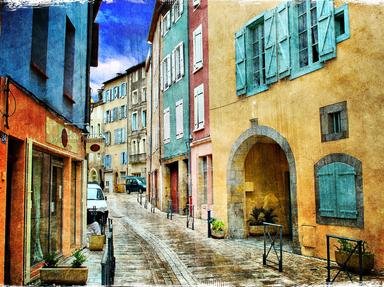Quiz Answer Key and Fun Facts
1. Many artworks of the Gothic period were produced using a type of paint made using egg yolk. By what name is this type of paint known?
2. A series of panels named for which famed English archbishop, were produced between 1424 and 1436 by Master Francke in Hamburg?
3. This example, known as the Roudnice Madonna, was painted by an artist known simply as the Master of the Trěboň Altarpiece. From which artistic and free-spirited European region did this artist hail?
4. This, a panel from the Melun Diptych, was created in circa 1450 by a painter who is accepted as the most famous French artist of his time. Appointed to the position of court painter to King Charles XI towards the end of his career, who was this artist?
5. In religious art of the Gothic period, symbolism was important in the message that the picture was conveying to the viewer. What is the significance attributed to the golden background in this piece?
6. For which King or Queen of England was the piece known as the Wilton Diptych created?
7. The artist known as Master Bertram worked from a studio based in the town of Minden in northern Germany. This image, from a major work known as the Grabow Altarpiece, shows the figure of whom surrounded by animals, birds and fish in a principal story from the books of the Old Testament?
8. Another product from the Master of the Trěboň Altarpiece is this panel work known as The Resurrection, a panel which features on the Trěboň Altarpiece itself. Does the use of the many red or reddish tones indicate that this panel was to be displayed on the altar on a weekday?
9. The central panel of this version of the Adoration of the Magi was completed by the Sienese born artist Lorenzo Monaco in circa 1422. Now fixed as a single large panel, what liturgical form did this piece take prior to the end of the fifteenth century?
10. In this image by the Tuscan artist Cimabue, dating to between 1280 and 1290, we can see an early attempt to demonstrate which mathematical principle and artistic technique later developed further by both Fillipo Brunelleschi and Piero della Francesca?
Source: Author
SisterSeagull
This quiz was reviewed by FunTrivia editor
ponycargirl before going online.
Any errors found in FunTrivia content are routinely corrected through our feedback system.
